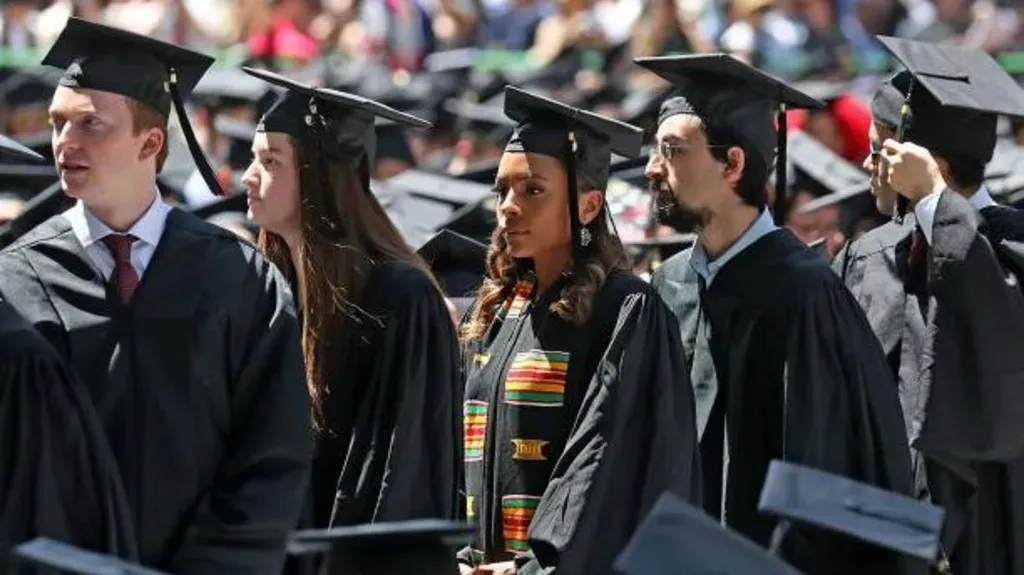A leading U.S. university has reported a significant decrease in minority student admissions following a Supreme Court ruling that banned affirmative action. The Massachusetts Institute of Technology (MIT) recently revealed that only 16% of its incoming class identifies as part of a minority group, a sharp 10% drop from the previous year. Particularly striking is the fall in Black student enrollment, which plunged from 15% to just 5%.
The decision to end affirmative action has sparked widespread debate across the country, and MIT is the first major institution to release data showing the immediate impact on its student body. The ruling, made in 2023 by the U.S. Supreme Court, found that admissions policies designed to promote racial and ethnic diversity were in violation of the Constitution’s equal protection clause.
MIT’s Dean of Admissions Responds to Changes
Stu Schmill, MIT’s dean of admissions, anticipated the decline in minority student admissions and acknowledged the reality of the numbers. “We expected a decrease, and that is what happened,” Schmill said. He further expressed regret, noting that the school likely overlooked many highly qualified candidates. “I have no doubt that we left out many well-qualified, well-matched applicants who would have excelled here,” Schmill added.
MIT’s president, Sally Kornbluth, echoed these sentiments in a public announcement, praising the overall strength of the incoming class while lamenting the loss of the racial and ethnic diversity the school had cultivated over the years. “The new student intake is, as always, outstanding,” Kornbluth said, “but it lacks the broad diversity that MIT has worked so hard to achieve over the last several decades.”
Sharp Decline in Black and Hispanic Enrollment
In the past, around 25% of MIT’s undergraduate students identified as Black, Hispanic, Native American, or Pacific Islander. However, the numbers have dropped considerably this year. The percentage of Black students in the new class fell to 5%, down from 15%, while Hispanic and Latino enrollment also dropped from 16% to 11%.
White students now make up 37% of the new class, a slight decrease from 38% last year. On the other hand, the percentage of Asian American students has increased to 47%, compared to 40% the previous year. These percentages do not add up to 100%, as some students identify with more than one race or ethnicity.
This decline in minority admissions comes despite more than 40% of the U.S. population identifying as non-white, according to 2023 census data. The discrepancy has raised concerns among many who view the ruling as a step backward for diversity in higher education.
MIT’s Response to the Court Ruling
In the aftermath of the Supreme Court decision, MIT has been exploring ways to maintain diversity within its student body without using race or ethnicity as a factor in admissions. Schmill mentioned that the university has already taken steps to broaden its recruitment and financial aid efforts, with a particular focus on low-income students from all backgrounds. The aim is to ensure that economic diversity, as well as geographic and educational background, is prioritized in the admissions process.
“We now look for diversity through prospective fields of study, areas of research, extracurricular activities, accomplishments, and more,” Schmill explained. The shift in focus allows the university to maintain a wide variety of students’ interests and experiences while complying with the legal requirements imposed by the Supreme Court.
Additionally, MIT did not ask applicants for their race or ethnicity during the admissions process this year, only requesting that information from students who were officially enrolled. This procedural change aligns with the new legal landscape post-affirmative action and reflects the university’s efforts to adapt to the ruling.
Broader Implications of the Supreme Court Decision
MIT’s data provides the first concrete look at how the 2023 Supreme Court ruling is shaping university admissions, and other top-tier institutions are expected to follow with similar reports. The case that led to the ruling was brought forward by Edward Blum’s group, Students for Fair Admissions. Blum argued that affirmative action policies unfairly discriminated against Asian American students and should be abolished in favor of a race-neutral admissions process.
Following the court’s decision, Blum commented that students accepted to institutions like MIT can now be certain they were admitted solely on their academic and extracurricular merits, rather than their race. “Every student admitted will know that they were accepted only based upon their outstanding academic and extracurricular achievements, not the color of their skin,” Blum told The New York Times.
The Future of Diversity in Higher Education
The debate surrounding affirmative action is far from over. While some argue that merit-based admissions are the fairest way to evaluate applicants, others point out that this approach ignores the systemic inequalities that minority students often face. Critics of the Supreme Court decision contend that without affirmative action, universities will struggle to maintain the levels of racial and ethnic diversity that they have worked to foster over recent decades.
For MIT, the decline in minority student enrollment highlights the challenges that schools will face in the coming years. While the university has promised to continue its efforts to attract a diverse student body, the path forward remains uncertain. Many are watching closely to see how other institutions of higher learning will respond to the court’s ruling, and whether alternative methods of ensuring diversity will prove effective.
The affirmative action debate touches on broader issues of equity, opportunity, and fairness in American society. With the college admissions process at the heart of this conversation, the stakes are high for institutions like MIT that seek to provide equal access to education while navigating the complex legal and social terrain shaped by the Supreme Court.
As universities across the U.S. adapt to the new legal landscape, the consequences of this ruling will likely ripple through the education system for years to come. The focus now shifts to how schools can achieve diversity in other ways, and whether these efforts will be enough to create an inclusive and equitable academic environment for all students.

